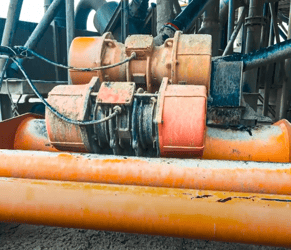By Grant Burton on Apr 15, 2020 4:35:13 PM
Vibratory equipment is used all over the world in just about every industry imaginable. From food and pharmaceutical processes to mining and metal casting operations, customers rely on vibration to improve material flow and get the job done.
Original Equipment Manufacturers, or OEMs, design and build machines that are an integral part of our everyday lives. Many things that we see, use, or even the food that we eat have been across a vibratory piece of equipment at some point. Over the years, we have supplied countless vibrators to OEMs and end-users (e.g., producers) who sometimes take it upon themselves to build their own equipment or add vibrators to an existing machine. Vibrators are the driving force that makes the equipment work. They are often referred to as the "heart of the machine" because, without them, nothing else on the machine can do its job.

More times than not, two vibrators are used to drive vibratory equipment. Whether a feeder, screen, conveyor, compaction table, shakeout, or several other types of machines, two vibrators are usually ideal for the application. The two vibrators work together to produce a linear force that drives the machine in the same direction as the material flow with gravity assisting along the way. If one of the vibrators loses power or fails for whatever reason, the machine will either shut itself down or not function properly. Two suitable vibrators producing the same force at the same speed are vital to the performance of the equipment and the productivity of the operation.
Misunderstanding Replacement Vibrators
One of the biggest misconceptions in the field is that you must replace a failed vibrator with the exact same brand/model as supplied by the OEM. Although in some unique cases, this is true, the overwhelming majority of the time, it is false. If a vibrator manufacturer can supply a model with the same form, fit, and function as one of the original units, the machine can and will run as good as new.
Important Factors to Consider
When replacing an original vibrator, make sure:
- You choose a unit with the same bolt pattern, speed, and unbalance.
- You set the eccentric weights on the replacement vibrator to achieve the same force as the original unit
- To supply the same power to the replacement vibrator as the adjacent or corresponding vibrator
I always recommend making a phone call to go over the application and ensure you are getting the correct model that will run "in tandem" with the existing unit. Whether operating electric, hydraulic, or pneumatic vibrators, following the above guidelines will quickly get you back up and running and producing.



comments